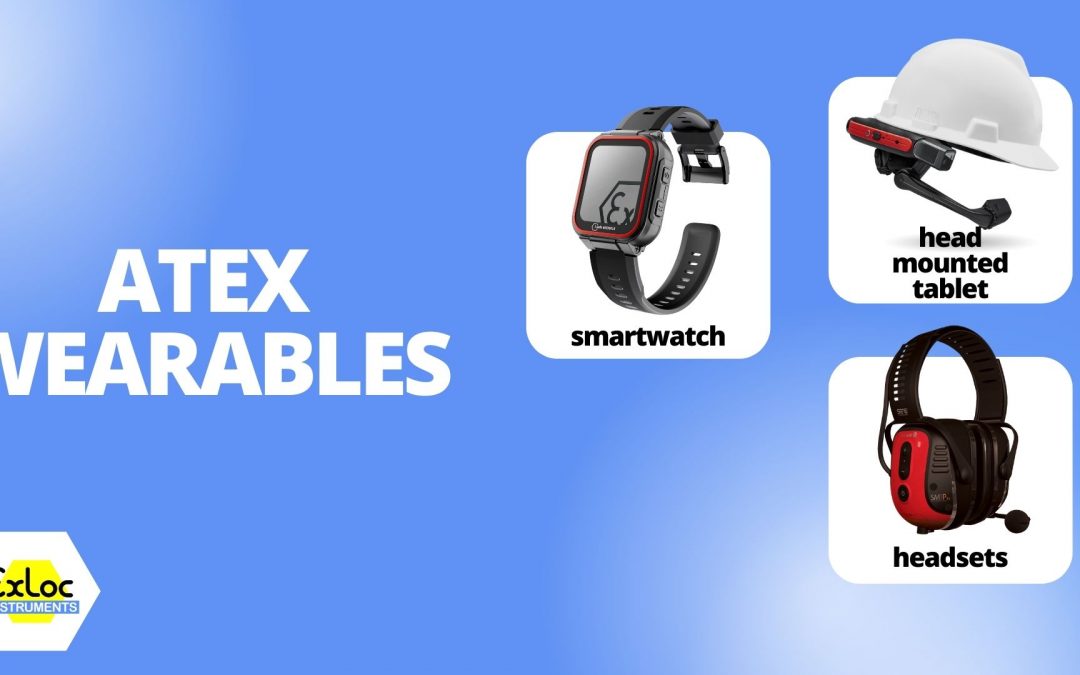In recent years there has been a huge shift towards the use of ATEX wearables in hazardous areas as they provide a level of connectivity which significantly increases the capabilities of hazardous area workers.
These devices now offer a higher level of safety to the user and can often provide independent working for users who were previously unable to work alone. There are also many cost savings that can be made using devices which enable collaboration between field workers and specialists located around the World.
Smartwatch
Thanks to the introduction of the i.safe MOBILE IS-SW1.1 ATEX Zone 1 smartwatch, there are a range of new safety measures open to mobile workers.
The IS-SW1.1 has a host of loan working features such as an SOS button which can instantly connect a call to emergency responders while also having key features such as an accelerometer and a gyroscope which can automatically trigger a call.
As well as safety features like this, the smartwatch has NFC reading capabilities to read tags while carrying out inspections and it can emulate an RFID smart card to enable access to specific areas. If you want to manage who can access specific areas of your site then simulating RFID smart cards means that an operator would have to scan their watch before accessing an area – if they have the right level of permissions then they will be able to access. This can also enable tracking to monitor the location of workers in the event of an emergency.
In addition to these features, the smartwatch also acts as a display to show the wearer any important notification, messages and health metrics such as heart rate and blood oxygen levels to further increase the level of safety for hazardous areas workers.
Headsets
ATEX headsets can be used for more than simple hearing protection, they can be used to significantly increase the ability to communicate in loud and remote locations. Devices like the Sensear SM1P02-Ex enable clear two-way communications in high-noise environments thanks to having both Bluetooth and cabled connectivity to a wide range of smartphones, mobile phones and radios. If an operator needs to contact anyone, they can take hands-free calls directly on the headset which will noise-cancel any external noises, making it easy to be understood even in extreme situations.
The SM1P02-Ex is designed to be used for multiple shifts thanks to its 24 hour battery life. Thanks to the Bluetooth connectivity, the headset can be paired with an ATEX smartphone to stream any audio. This enables complete hearing protection while also allowing the operator to listen to music or audiobooks while working a long shift.
Head Mounted Tablet
The HMT-1Z1 truly takes hazardous area work to the next level. This head mounted tablet enables complete hands free working while also having complete access to all the capabilities of a tablet using voice alone.
The HMT-1Z1’s display appears like a 7 inch tablet in front of the user’s vision though it can be adjusted and moved out of sight when not needed. Thanks to the adjustable arm on the front of the device, it is fully adjustable for any user – even if the user wears glasses.
With the HMT-1Z1, users can access any information relevant to the task they are carrying out. They can display diagrams, maps or training documents simply by using their voice to navigate the tablet. In addition to this, it has an Android operating system enabling the use of many diverse applications on the device.
The video calling capabilities of the HMT-1Z1 allows the user to make a video or voice call to anyone via Zoom or Microsoft Teams, as well as any other Android communications app. By using the forward facing camera, the user can show anyone their exact view which enables anyone to advise on any issue which may arise. This can lead to extreme cost savings for operators who need specialist advice on a problem. Traditionally this would mean that a specialist would have to travel to the site, sometimes places as remote as oil rigs, at a significant time and monetary cost to the company. Thanks to the HMT-1Z1, a video call can be made instantly giving anyone a comprehensive view of the situation which oftentimes can completely mitigate the needs for travel leading to significant cost savings.
The area of ATEX wearables is one which is continuing to expand and at Exloc, we will continue to offer the most cutting edge devices which improve the user experience for hazardous area workers throughout the UK.
If you are interested in how you can take your operations to the next level then contact Exloc today and speak with our team of specialists who can help guide you through the options available.


